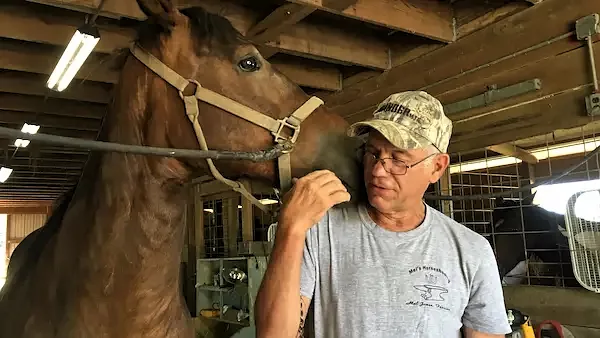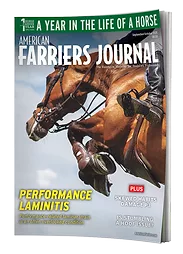This year marks the 50th anniversary (and 32nd year at Lessiter Media) of American Farriers Journal covering the farrier trade. We’re asking hoof-care professionals for a few words to include in a “From the Audience” section of our coverage – in the December edition.
Mel Jones, APF, of Galloway, Ohio, shares his thoughts on the hoof-care milestones over the past half-century.
Q. When you look back at the last 50 years of new technologies, what were the biggest defining moments that forever changed farriery and equine health as we know it today?
A. The defining moment started a little over 50 years ago when Burney Chapman of Lubbock, Texas, reintroduced a shoeing technique from the 1800s. It was known as the heart-bar shoe, which was a therapeutic shoe for laminitic horses. This type of shoe revolutionized the treatment for horses with this issue. Horses that previously were euthanized were now able to become useful equine companions, even if only as pasture horses.
Several years later, Dr. James Belknap of The Ohio State University Veterinarian Hospital performed a laminitis study on extremely rotated cases and found that applying a Vettec Equi-Pak pour-in pad to the hoof, rather than a heart bar, created several millimeters of cushioning for these horses. This allowed them to move comfortably within a few days. The Vettec products, as well as other urethane and acrylic products, have allowed the development of the glue-on shoe industry that has helped many sore-footed horses and horses with poor hoof quality become useful in many disciplines.
In addition to the glue-on shoe industry, it is also possible to use shoes that are made of urethane, composite materials, plastics and other compounds that were not developed, or even thought of, 50 years ago. The farriery and equine health industries have improved so much in the last 50 years. It’s exciting to see where they will be in the next 50.
Q. For the newer generation, what are the biggest ways that farriery and equine health is totally different from that of 50 years ago?
A. Longer than 50 years ago, extremely successful farriers would take their trade secrets to the grave with them before they would share them with another Farrier. Albuquerque, N.M., farrier Walt Taylor, started the American Farrier’s Association in 1971.
One of the main ideas behind the founding of the AFA was the communication between farriers and veterinarians. This allowed farriers to gather and discuss, and share ideas and techniques that they used in dealing with different situations.
New associations developed and others reappeared since that time. We now have conventions and several fantastic clinics we can attend. One of those is the International Hoof-Care Summit, created by the American Farriers Journal.
There is a much better relationship now with veterinarians than in the past. That is likely due to the improved relationship and communication between the different farrier associations and the American Association of Equine Practitioners. Because of this relationship, equine health has improved since they now work as a team, rather than as individuals.
Q. What are some specific ways that American Farriers Journal magazine impacted your business and staff?
A. I have been receiving the American Farriers Journal since the early years of my farrier career. The articles provide cutting-edge information and new techniques that can be utilized on my patients to achieve positive results.
Professionals from around the world share their insights into the important milestones, innovations and the role American Farriers Journal has played over the last half-century.
Read essays from...
- Bob Smith
- Stuart Muir
- Mike Lessiter
- Heidi Larrabee
- Esco Buff
- Walt Taylor
- Simon Curtis
- Renate Weller
- Kit Miller
- Steve Kraus
- James Orsini
- Connor Sloman
- Cody Ovnicek
- Bill Everitt
- Mel Jones
- Dick Mansmann
- Brian Rusnak
- Pat Tearney
- Doug Butler
- Joanne Volkert
- Virgil Gluth
- Gretchen Cardoso
- Kim Otterson
- Brian Hyodo







